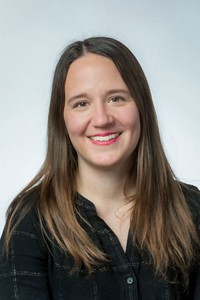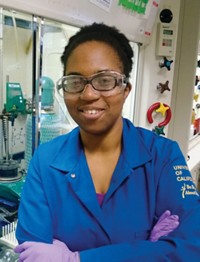Advertisement
Grab your lab coat. Let's get started
Welcome!
Welcome!
Create an account below to get 6 C&EN articles per month, receive newsletters and more - all free.
It seems this is your first time logging in online. Please enter the following information to continue.
As an ACS member you automatically get access to this site. All we need is few more details to create your reading experience.
Not you? Sign in with a different account.
Not you? Sign in with a different account.
ERROR 1
ERROR 1
ERROR 2
ERROR 2
ERROR 2
ERROR 2
ERROR 2
Password and Confirm password must match.
If you have an ACS member number, please enter it here so we can link this account to your membership. (optional)
ERROR 2
ACS values your privacy. By submitting your information, you are gaining access to C&EN and subscribing to our weekly newsletter. We use the information you provide to make your reading experience better, and we will never sell your data to third party members.
Graduate Education
Teaching chemistry citizenship
A course at the University of California, Berkeley, gets first-year chemistry graduate students thinking about the field’s broader impact
by Bethany Halford
August 28, 2024
| A version of this story appeared in
Volume 102, Issue 27

Graduate school is typically a time for extreme focus on research, but in the chemistry program at the University of California, Berkeley, first-year graduate students are required to take a step back to consider the impact of their work on the world. They do this as part of Scientific Responsibility and Citizenship—a discussion-based class about chemistry’s effects on people and the planet.

The seminar course was developed primarily by Kay Xia, who completed her PhD research at UC Berkeley in 2023 and is now a postdoctoral scholar at the California Institute of Technology. “I always found it really curious that there’s so little discussion of the social impacts of scientific research, even though our research does end up having these really big impacts,” she says.
So when Xia was the first person recognized with UC Berkeley’s College of Chemistry Diversity, Equity, and Inclusion Scholar Program in early 2022—her third year of grad school—she decided to use the opportunity to dig in to how social biases influence chemistry research.
Each year, the Chemistry Department surveys its graduate students and faculty to assess their experiences. Xia added several questions to the 2022 survey to get a sense of respondents’ values.
The survey results showed that everyone in the department valued basic science and creativity. But minoritized students—including those who have a race, ethnicity, gender, or socioeconomic status underrepresented in chemistry—tended to place more value on things like having a positive impact on the community and minimizing the potential harms of research than students not from these groups, Xia says.
The survey also revealed that while students thought it was personally important to advance social justice, they didn’t think it was relevant to chemistry research. Faculty, on the other hand, felt that their research did have social justice implications.
The responses prompted Xia to develop the Scientific Responsibility and Citizenship course. Working with Anne Baranger, associate dean for diversity, equity, and inclusion in the College of Chemistry, and Matthew B. Francis, who chaired the Chemistry Department at the time, Xia designed a course in which students and faculty could talk about how chemical advances have affected society.
Even if graduate students don’t feel that their particular project has much social relevance, Baranger says, “the field of chemistry has tremendous impact.” As chemists, “we have both the right and responsibility to think more broadly about what we’re doing. And to really think about how science fits into the larger world,” she says. The course challenges the students and faculty to do just that.
“It is not a course where we tell the students what they should think. It is a class where we tell them to think,” Francis says. “And then we give them some social construct tools they can use while they’re going through that thinking process.”
The course, which was taught to 75–80 students in each of the fall semesters of 2022 and 2023, focused on four topics: nuclear chemistry, hormonal birth control, rare earth elements, and problematic chemicals like polyvinyl chloride.
Xia says the discussion of the development of nuclear chemistry—much of which took place at UC Berkeley in the 1930s—was particularly thought provoking. Scientists used the developments to make nuclear weapons. Xia says she intentionally avoided discussions about using the atomic bomb during World War II because the topic is sensitive for students with US or Japanese ancestry. But she thought the opportunity to talk about nuclear weapons testing was instructive.
For example, the Trinity nuclear tests overseen by physicist Robert Oppenheimer harmed—and continue to harm—Hispanic and Indigenous populations downwind from the test site in New Mexico. The tests and others have also created ongoing harm for Indigenous peoples in the Arctic Circle. These communities have been disproportionately exposed to radiation from testing because of the way radioactive particles tend to travel and accumulate.
“It’s one of the few examples we have where basic research in a purely lab setting translates to this hugely impactful technology in such a short span of time,” Xia says. “Academic scientists—people like us—actually had a really big influence on how these things played out.”
Even though the topics could be difficult to discuss, the students and faculty were able to communicate and disagree respectfully, Xia says. “It felt really productive and actually community building,” she says. “So much science is about respectful disagreement and discourse because so many research questions also have no definite answers yet. And it’s important to be able to say, ‘Here’s what we know, and here’s my interpretation. It might be different from your interpretation, but we can discuss that.’ ”
First-year graduate students have a lot to juggle—attending classes, picking a research adviser, getting started on the project that will earn them a PhD. To prevent the course from becoming onerous, Xia and Baranger limited it to six 1 h sessions. And there were snacks.
Francis, who was chair of the department in 2022, made a point of coming to all six sessions. Dean Toste, who succeeded Francis as department chair in 2023, did the same.
“Having the chair of the department be there, I hope, sends the message that the department and the general scientific community cares about these things,” Toste says.
In addition to educating students and faculty, the goal of class was to show students who care about these issues that they are not alone. “We thought that maybe through this discussion-based course format that we could, on one hand, show our students how this is related to research and, on the other hand, improve inclusion and retention of minoritized students since they tend to value these aspects more,” Xia says.
Graduate student Abby Medlin led the seminar in 2023. “The students all love the course. We were worried that they wouldn’t because it’s taking away from their time to do chemistry. But the feedback that we got was always extremely positive,” she says.
Medlin says she wishes she’d had the opportunity to take the course in her first year of grad school because it would have demonstrated to her that the Chemistry Department cares about social responsibility. “I think that really would have changed my experience in the department,” she says.
A survey of participants from the 2022 course shows that while some students found that it reinforced what they already knew, many said they’d never been exposed to these topics or thought about them throughout their education, Xia says. A small percentage—less than 10%—said they didn’t think the course was a good use of their time.
Baranger and Toste say the department will continue to require the course for the foreseeable future, although they may change some of the discussion topics.
One unexpected outcome from the course is that students felt more galvanized to be good citizens, Xia says. “They felt more of a sense of community to work on these things together and also to have more of these conversations with each other,” she says.





Join the conversation
Contact the reporter
Submit a Letter to the Editor for publication
Engage with us on Twitter